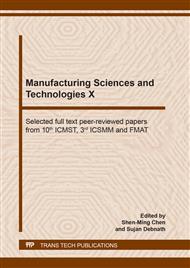p.18
p.23
p.28
p.36
p.43
p.49
p.59
p.65
p.70
The Process Development for Sound Absorption Design of Non-Woven Car Mat
Abstract:
Automotive interior material with consists of several material layers has the sound-absorbing function. It is difficult to predict sound absorbing coefficient because of several material layers. So, many experimental tuning is required to achieve the target of sound absorption. Therefore, while the car interior materials are developed, a lot of time and money is spent. In this study, we present the method to predict the sound absorbing performance of the material with multi-layer using physical properties of each material. The properties are predicted by foam-X software using sound absorption coefficient data measured by impedance tube. And we will compare and analyze the predicted sound absorption coefficient with the data measured by scaled reverberation chamber and impedance tubes for a prototype. If the method is used instead of experimental tuning in the development of car interior material, the time and money can be saved. And then, the development effort can be is reduced because it can be optimized by simulation.
Info:
Periodical:
Pages:
43-48
Citation:
Online since:
June 2020
Authors:
Price:
Сopyright:
© 2020 Trans Tech Publications Ltd. All Rights Reserved
Share:
Citation:


